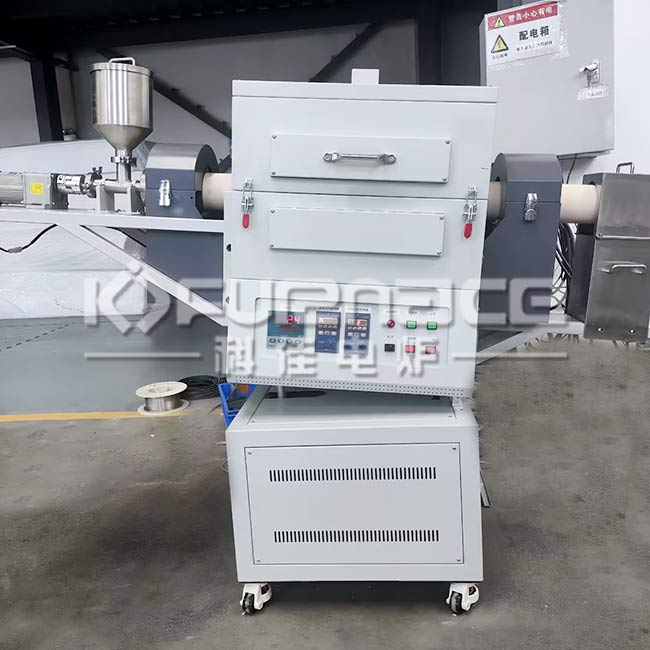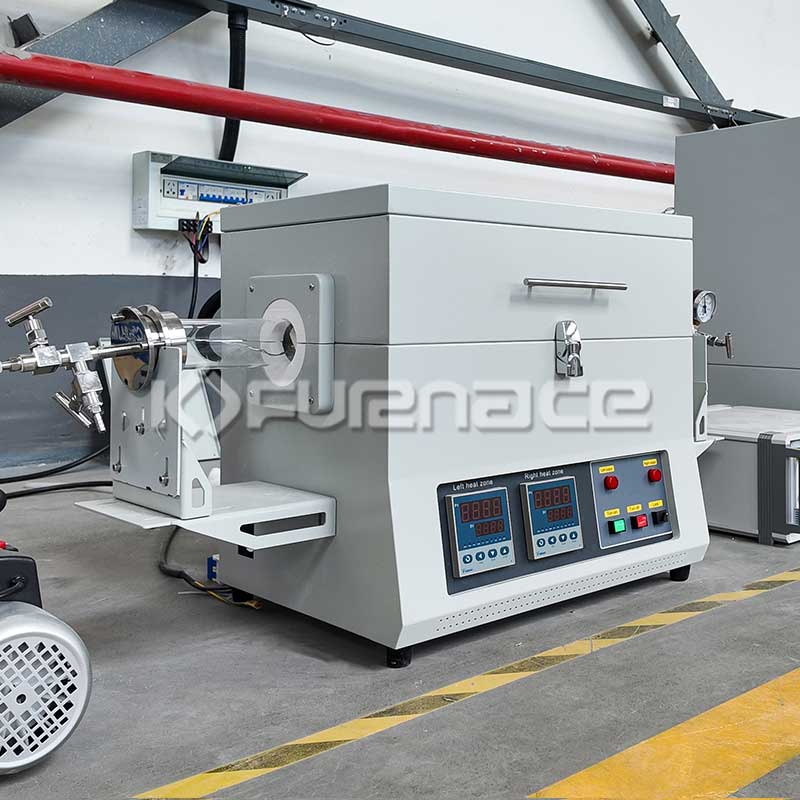rotary tube furnace vs tube furnace
The rotary tube furnace is a special type of tube furnace. The following is a detailed explanation of the difference and connection between the two:Definition and structureTube furnace: Generally a common heating equipment, there are many types (such as single temperature zone, double temperature zone, three temperature zones, etc.), with safety and reliability, simple operation, high temperature control accuracy, good insulation effect, large temperature range, high furnace temperature uniformity, multiple temperature zones, optional atmosphere, vacuum pumping and other characteristics, the furnace structure is usually relatively fixed. It is mainly used for experiments and small batch production in colleges and universities, scientific research institutes, industrial and mining enterprises.
Rotary tube furnace: It is a special form of tube furnace. In addition to some basic characteristics of tube furnace, its uniqueness lies in that the furnace tube can rotate. There are many types of furnaces such as double tube, horizontal, openable, vertical, etc. Some rotary tube furnaces can also be made into adjustable tilt angles, which are adjusted by electric or hydraulic support. The furnace tube transmission is installed at the inlet and consists of gears, reduction devices, etc. Some rotary tube furnaces adopt double-layer air-cooling structure, and the furnace chamber adopts high-purity alumina ceramic fiber high-temperature vacuum adsorption molding, which is composed of two semicircular furnace structures for easy opening.Working principleTube furnace: Heat is generated by heating elements (such as resistance wires, etc.) to heat the materials in the furnace tube, and the materials complete the heating process in a relatively static state.
Rotary tube furnace: While heating, the furnace tube rotates, so that the materials are constantly turned in the furnace tube to ensure that the materials are heated more evenly. For example, the 1200 tiltable rotary tube furnace tube wall has a quartz baffle to help the powder turn over, which helps to sinter more evenly.

Application scenarioTube furnace: It is widely used in experiments and small batch production in colleges and universities, scientific research institutes, industrial and mining enterprises, etc. It can be used for experiments such as heat treatment of various materials, such as catalyst tube furnace projects.
Rotary tube furnace: The application scenarios are more extensive and targeted:
Ceramics, metallurgy, electronics and other industries: Rotary tube furnaces can be used for sintering of ceramic materials, sintering and smelting of metal powders, preparation of semiconductor materials, etc. For example, BXG high-temperature double-tube rotary tube furnaces are mainly used in ceramics, metallurgy, electronics, glass, chemicals and other industries.
New energy field: In the preparation of solar cells, it can be used to prepare silicon-based materials in solar cells.
Catalyst preparation: used for sintering and regeneration of catalysts to improve the activity and service life of catalysts.
Battery materials: Especially for the preparation of lithium-ion battery negative electrode materials, it can improve conductivity. It can also be used for laboratory calcination and drying of battery positive and negative electrode materials, non-strong acid and alkaline powder materials, and granular materials.Advantages and disadvantages

Tube furnace:Advantages: The structure is relatively simple, the cost may be low, and the operation is relatively easy. It can meet some experimental and production requirements that do not require particularly high material uniformity.
Disadvantages: The material heating uniformity may not be as good as the rotary tube furnace, and for some processes that require high heating uniformity, it may not achieve the ideal effect.Rotary tube furnace:Advantages: The material is heated uniformly, which can shorten the sintering time, reduce energy consumption, and improve product quality; it can meet the needs of a variety of special materials and processes, such as the preparation of lithium-ion battery negative electrode materials, powder material coating, etc.
Disadvantages: The structure is relatively complex, the equipment cost may be high, and the maintenance difficulty is relatively large. ![]() Send E-mail:web@kejiafurnace.com
Send E-mail:web@kejiafurnace.com![]() Wechat/Whatsapp: +86 18037178440
Wechat/Whatsapp: +86 18037178440![]() Company Tell: +(86)18037178440
Company Tell: +(86)18037178440

 E-mail:web@kejiafurnace.com
E-mail:web@kejiafurnace.com
 Tell:+(86) 18037178440
Tell:+(86) 18037178440
 Whatapp:+(86) 180-3717-8440
Whatapp:+(86) 180-3717-8440
 Address:Room 1505, Building 9, No. 26 Dongqing Street, Zhengzhou High-tech Industrial Development Zone
Address:Room 1505, Building 9, No. 26 Dongqing Street, Zhengzhou High-tech Industrial Development Zone


 Website navigation
Website navigation
 Position:
Position:





